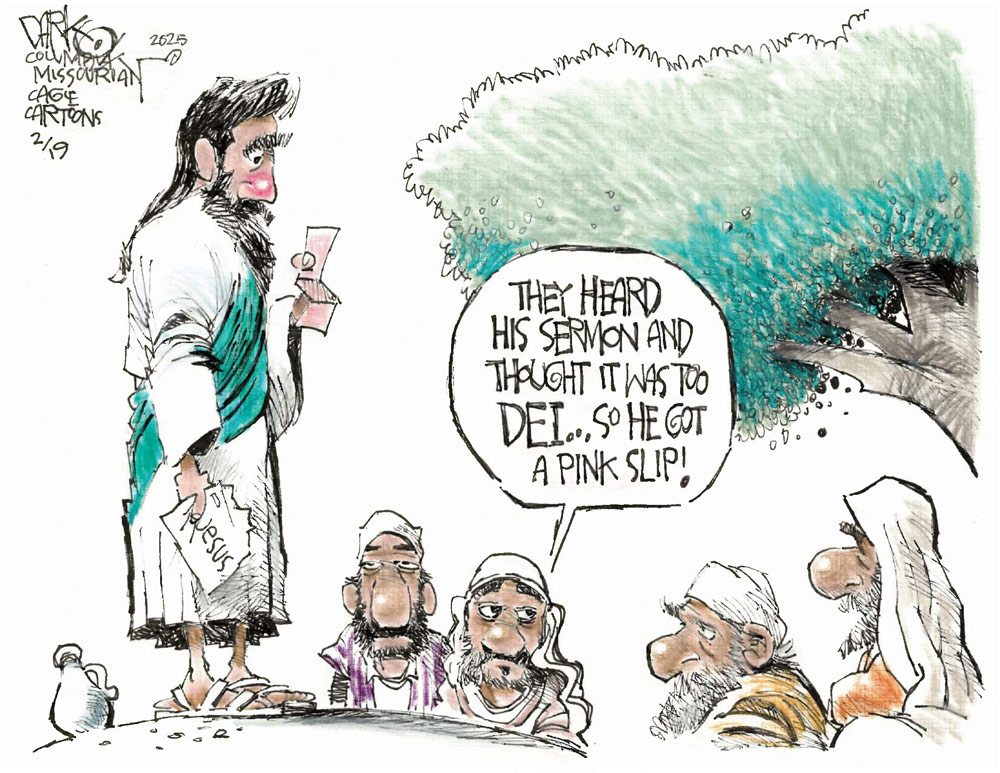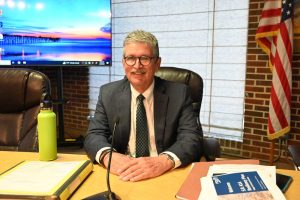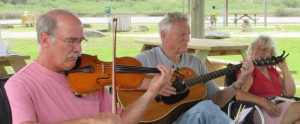
To include your event in the Briefing and Live Calendar, please fill out this form.
Weather: Partly sunny in the morning, then clearing. Highs in the lower 60s. Northwest winds 10 to 15 mph. Thursday Night: Mostly clear. Cooler with lows in the upper 30s. North winds 5 to 10 mph.
- Daily weather briefing from the National Weather Service in Jacksonville here.
- Drought conditions here. (What is the Keetch-Byram drought index?).
- Check today’s tides in Daytona Beach (a few minutes off from Flagler Beach) here.
- Tropical cyclone activity here, and even more details here.
Today at a Glance:
Drug Court convenes before Circuit Judge Dawn Nichols at 10 a.m. in Courtroom 401 at the Flagler County courthouse, Kim C. Hammond Justice Center 1769 E Moody Blvd, Bldg 1, Bunnell. Drug Court is open to the public. See the Drug Court handbook here and the participation agreement here.
The Cold-Weather Shelter known as the Sheltering Tree, opens:The shelter opens at Church on the Rock at 2200 North State Street in Bunnell as the overnight temperature is expected to fall to 40 or below. It will open from 5 p.m. to 8 a.m. The shelter is open to the homeless and to the nearly-homeless: anyone who is struggling to pay a utility bill or lacks heat or shelter and needs a safe, secure place for the night. The shelter will serve dinner and breakfast. Call 386-437-3258, extension 105 for more information. Flagler County Transportation offers free bus rides from pick up points in the county, starting at 3 p.m., at the following locations and times:
- Dollar General at Publix Town Center, 3:30 p.m.
- Near the McDonald’s at Old Kings Road South and State Road 100, 4 p.m.
- Dollar Tree by Carrabba’s and Walmart, 4:30 p.m.
- Palm Coast Main Branch Library, 4:45 p.m.
Also: - Dollar General at County Road 305 and Canal Avenue in Daytona North, 4 p.m.
- Bunnell Free Clinic, 4:30 p.m.
- First United Methodist Church in Bunnell, 4:30 p.m.
The shelter is run by volunteers of the Sheltering Tree, a non-profit under the umbrella of the Flagler County Family Assistance Center, is a non-denominational civic organization. The Sheltering Tree is in need of donations. See the most needed items here, and to contribute cash, donate here or go to the Donate button at this page.
Workshop on Establishment of an Erosion Control Line in Flagler, 5:30 p.m. at the Government Services Building, 1769 East Moody Boulevard, Bunnell. The Department of Environmental Protection (DEP), as designee for the Board of Trustees of the Internal Improvement Trust Fund of the State of Florida, is holding a workshop on the establishment of an Erosion Control Line along segments of the county’s shore associated with beach renourishment.
‘The Niceties,’ at Palm Coast’s City Repertory Theatre, 7:30 p.m. Thursday, Friday and Saturday, 3 p.m. Sunday, 160 Cypress Point Parkway (City Marketplace, Suite B207), Palm Coast. $25 for Adults, $15 for Students. Book here. An urgent debate about race, history and power by Eleanor Burgess. Zoe, a Black student, meets her white professor to discuss a paper on slavery’s impact on the American Revolution. What starts as a polite clash of perspectives erupts into a riveting debate. Praised for its gut instinct and talent, The Niceties by Eleanor Burgess offers a wholly satisfying evening of theater. The Saturday performance will be followed by discussion panel.
See:
‘The Drowsy Chaperone,’ at St. Augustine’s Limelight Theatre, 11 Old Mission Avenue, St. Augustine, 7:30 p.m. Thursdays, Fridays and Saturdays, 2 p.m. Sundays, $35. When wealthy widow, Mrs. Tottenham, hosts the wedding of the year, she gets a lot more than a write-up in the society pages. This magical piece of meta-theatre and playful, heartfelt parody of the 1920s musical comedy features a chirpy jazz age score by Tony-winning collaborators. Book here.
Model Yacht Club Races at the Pond in Palm Coast’s Central Park, from noon to 2 p.m. in Central Park in Town Center, 975 Central Ave. Join Bill Wells, Bob Rupp and other members of the Palm Coast Model Yacht Club, watch them race or join the races with your own model yacht. No dues to join the club, which meets at the pond in Central Park every Thursday.
Story Time for Preschoolers at Flagler Beach Public Library, 11 to 11:30 a.m. at the library, 315 South Seventh Street, Flagler Beach. It’s where the wild things are: Hop on for stories and songs with Miss Doris.
Freedom to Read: Defending Book Access In Public Schools, a panel discussion at the Universal Unitarian Congregation, 56 North Halifax Drive, Ormond Beach, 6:30 p.m. Banned Books are an issue in Flagler County and now in Volusia County Schools. The current administration and School Board have done nothing to solve the problem. This panel discussion – with Q&A from the audience – will explore how we got here and what can be done now. This program is part of the Ormond Beach Area Democratic Club’s monthly meeting.
Speaking of Museums: The Museum of Tolerance in Jerusalem “is a place where individuals from across the world gather, converse openly, and feel at home,” it tells visitors. “With its four open walls that fill the space with light, visitors immediately feel welcomed and at ease. The museum is in the shape of a dove, representing its pursuit of peace and hope for a better future. The building’s focal point is the monumental crisscrossed staircase, emphasizing that true tolerance and understanding come from engagement, listening to one another, and immersing ourselves in others’ perspectives.” It provides this quote from its leadership: “”We are building in Israel because the Museum’s themes of promoting Jewish unity and universal respect are absolutely vital to Israel’s future. The Museum of Tolerance Jerusalem is not a museum about the past; it is a museum with a21st century idea that will deal with the crucial issues of today and tomorrow”. Here’s what the Museum of Tolerance doesn’t tolerate: any exhibits on Israel’s occupation, any exhibits about Israeli apartheid, any exhibits about tolerating, let alone respecting, Palestine’s right to exist. And here’s what it will not tell visitors: the Museum of Tolerance is situated on top of the Mamilla Cemetery, a 1,000-year-old cemetery ironically dating back to the era of the Crusades and revered by Muslims. I say ironically, because it was Christian crusaders who, outside of Antioch (or so tells us Rene Grousset in his Histoire des croisades), the French Comte de Toulouse used a Muslim cemetery’s tombstones to build his castle, what became known as Chateau-Raymond (not to be confused with today’s wine of the same name). And so crusader folly links up with Israeli tolerance, such as it alleges to be.
—P.T.
View this profile on Instagram
![]()
The Live Calendar is a compendium of local and regional political, civic and cultural events. You can input your own calendar events directly onto the site as you wish them to appear (pending approval of course). To include your event in the Live Calendar, please fill out this form.
December 2025
Kwanzaa Celebration
Flagler Beach Farmers Market
Coffee With Flagler Beach Commission Chair Scott Spradley
Grace Community Food Pantry on Education Way
Gamble Jam at Gamble Rogers Memorial State Recreation Area
Rotary’s Fantasy Lights Festival in Palm Coast’s Town Center
ESL Bible Studies for Intermediate and Advanced Students
Grace Community Food Pantry on Education Way
Palm Coast Farmers’ Market at European Village
Al-Anon Family Groups
Rotary’s Fantasy Lights Festival in Palm Coast’s Town Center
For the full calendar, go here.

I don’t know how I’m going to come out with the Agency. The Old Man will boil me in oil if he ever finds out what I’ve been doing. It’s this damned town. Poisonville is right. It’s poisoned me. Look. I sat at Willsson’s table tonight and played them like you’d play trout, and got just as much fun out of it. I looked at Noonan and knew he hadn’t a chance in a thousand of living another day because of what I had done to him, and I laughed, and felt warm and happy inside. That’s not me.I’ve got hard skin all over what’s left of my soul, and after twenty years of messing around with crime I can look at any sort of a murder without seeing anything in it but my bread and butter, the day’s work. But this getting a rear out of planning deaths is not natural to me. It’s what this place has done to me.”
–From Dashiell Hammett’s Red Harvest (1929).






































Pogo says
@Wow
Suicidal obsessed bitterness — and nothing else.
Eat up.
Ray W, says
FlaglerLive readers, many or few, may be aware that for the past two years I have repeatedly commented on the causes of high beef prices at the retail level. Yes, there may have been instances of price gouging by grocery store chains. But the main causes of high beef prices were persistent drought and unusually high heat across the upper Midwest that reduced crop yields across the country. Low crop yields trigger higher feed prices. The incredibly narrow profits margins inhering in the beef industry meant that many ranchers did not want to pay higher prices for feed, so they sold off portions of their herds prior to normal maturation stages in order to avoid the higher costs that they saw coming in the feed stage of maturation.
Two years ago, beef prices initially fell as the early selloff created a glut of beef coming onto the market. Overall head counts fell as the early slaughter continued. Then, after the 2022 early sell-off became complete, beef prices began to rise. The gullibly clueless among us began to blame the Biden administration for the rise in prices. As usual for them, they were wrong. It was heat and drought to be blamed.
In 2023, it was reported that ranchers were rebuilding their herds, but drought and heat returned. Once again, ranchers sold off portions of their herds to save money on feed. Once again, beef prices rose, and overall head count dropped. Once again, the gullibly clueless among us cried to the heavens that the Biden administration was destroying America. Once again, they were wrong. Heat and drought were again to blame. High feed prices due to low crop yields were to blame.
In 2024, moderate temperatures and ample rain returned, and crop yields improved. Feed prices dropped. Industry articles began predicting that ranchers would be rebuilding their herds. Lower beef prices were anticipated, but it takes time to increase head count. Cattle do not reach maturity in weeks; it takes many months. And ranchers have to hold off selling cattle at maturation in order for head count to rise.
Every January, an industry publication known as Drovers publishes its annual beef report, derived from the USDA’s annual Cattle Inventory Report. This year, Drover’s publication came out on January 31st. Most FlaglerLive readers know I prefer to rely on industry journals wherever possible.
Imagine my surprise at the Drover publication’s headline: “U.S. Beef Cattle Inventory Falls to the Lowest Level in 64 Years.” Ranchers weren’t rebuilding their herds.
Here are some bullet points from the article.
– Overall U.S. total cattle inventory fell 1% over the previous year to 86.7 million head of cattle.
– 37.2 million of the total had calved.
– 33.5 million calves had survived.
– 14.3 million head of cattle were on feed lots, down 1%.
– Milk cow totals rose slightly over the past year.
– According to Arlan Suderman, chief commodities economist with StoneX Group, “The big takeaway as we see it was the notable upward revision of last year’s numbers, and we expected that. The past year’s kills have simply been larger than implied by last year’s survey. …”
Mr. Suderman added: “The next big takeaway is that we have not started rebuilding the breeding herd. As such, perhaps we have a little higher numbers over the next half year or so, but then things get tighter, and more significantly tighter once we actually do start holding back heifers.”
– Per Scott Verilek, with Kooima Kooima Varilek, based in Sioux City, Iowa:
“Everything looks pretty in line until you get to that beef replacement heifer number, and I feel like that’s kind of a little bit of a surprise as we’ve been talking about heifer retention. We’re thinking it’s happening and the last cattle on feed report showed a few less heifers on feed but with a 101% estimate coming in at 99% we’re still off of year ago levels and still not seeing that rebuild in the cow herd.”
– The reporter wrote: “According to AdDay’s Michelle Rook, the cattle market continues to smash new records in both the futures market and in cash cattle trade. She reported a strong fed cash cattle market, combined with the border still being closed to Mexican feeder imports has also pushed both live and cattle futures to all-time highs.”
Curious about the reference to the border being closed to cattle, I looked it up. When Trump said in late November that he would place a tariff on Mexican imports, it immediately rattled the cattle futures market. Futures prices jumped in anticipation that the import of the normal 1 million expected head of Mexican cattle per year would not actually come to pass. (Remember, we are talking about futures prices).
The above-mentioned Mr. Suderman said: “Headlines are filled with scary scenarios that a trade war over tariff’s could bring, which tends to further reduce consumer confidence. That doesn’t bode well for the consumer paying up for the higher cuts of meat at these price levels.”
The question was asked to 70 agriculture economists: What would it take for producers to decide to rebuild their herds?
One economist wrote: “Better spring forage supplies could be the most important factor in growth. More quality labor could be critical, too.”
Make of this what you will.
Me?
Is it possible to infer from the agricultural economist quote about a possible shortage of skilled labor that deportation of skilled undocumented immigrant laborers who know the cattle industry from their homelands means that ranchers would be wise to hedge their bets by not increasing their herd sizes? Why should ranchers rebuild their herds if they are worried that they will be unable to find the necessary qualified labor to manage the herds.
As I have repeatedly commented, once Florida’s stupid legislators passed laws making it a felony for lawful immigrants to drive undocumented immigrants to church or to a grocery store, large numbers of lawful immigrant families fled the state. Last year, a Florida Farm Bureau spokesman told a reporter that Florida’s farmers had planted fewer acres of crops in 2024 because they didn’t know whether they could find the pickers to harvest the crops when the crops matured.
The economists focusing on the cattle industry expected growth in herd size year over year, but when the numbers came in, herd sizes were unexpectedly down. There may be some legitimacy to the argument that beef prices are higher due to the announcement of Trump tariff policy in November and due to the anticipation that worker supply will become tighter and tighter should undocumented immigrants who know how to handle cattle be deported.
If beef prices stay high throughout the year, the cause might be directly attributable to Trump policies. Make no mistake. If ranchers can’t find the labor they need to handle larger herds, they may very well decline to increase herd sizes. If they have to pay higher wages to attract other workers, they may very well decline to increase herd sizes.
Seth says
If you dislike DEI then just admit you are a racist! Diversity, equity, and inclusion made america better.Racism, hate,and ignorance turned us into amerikkka. How many people you think will die before this orange traitor is ended? I’m betting over 5 million.
Ray W, says
Here is yet another comment about yet another unique battery chemistry, this time about Lithium-Sulfur (Li-S) batteries.
Australia’s Monash University-affiliated researchers studied Li-S battery chemistry. They issued a paper detailing their findings. Interesting Engineering reported on the paper.
Here are a few bullet points from the article.
– Li-S batteries pre-date liquid-state lithium-ion batteries by about two decades, but an anode degradation problem hindered further development. In essence, because the anode is made from lithium and the cathode from sulfur, each discharge cycle stripped lithium ions from the anode. In other batteries, the lithium would be redeposited during recharging, but that doesn’t happen with this chemistry. As a result, the anode degrades with each discharge-recharge cycle, slowing recharge times and overall power output.
– The team looked at betadine as a coating material because betadine contains polyvinylpyrrolidone (PVP), “a synthetic polymer that can react with other molecules to form compounds with different properties.”
– PVP catalyzes chemical reactions in Li-S batteries, leading to faster charge and discharge rates.
– “Our catalyst has significantly enhanced the C-rate performance of Li-S batteries, … With commercial scaling and larger cell production, this technology could deliver energy densities up to 400 Wh/kg.” Just yesterday, I commented on sodium-ion batteries being used in cars that have an energy density of up to 150 Wh/kg.
– The reporter added that various types of liquid-state lithium-ion batteries have energy densities ranging from 150 – 235 Wh/kg.
– The new chemistry of Li-S batteries also dramatically speeds up the C-rate of the batteries. A 1C battery will fully charge or fully discharge in one hour. With such high C-rates, the new Li-S chemistry makes the batteries ideal for electric-powered aircraft, which need a high discharge rate on take-off. The new style of Li-S battery can efficiently switch to a low C-rate for cruising at altitude.
– With the new PVP chemistry, Li-S batteries suffer fewer short-circuits and fires, and they are more environmentally sustainable because they do not use cobalt.
Make of this what you will.
Me?
Yes, the new chemistry Li-S batteries work well in a lab. It has yet to be scaled up into a battery pack. But with an energy density that in some instances doubles that of certain of today’s liquid-state lithium-ion batteries, and with ultra-high-speed charge and discharge rates sufficient to power electric aircraft, the issue to me seems to center on the cost of the battery when scaled to commercial manufacturing.
I am going to say this over and over again. Ford’s CEO characterizes battery technology as at a Model T stage of development. New breakthroughs seem to issue daily. EVs, he says, are the future. ICE vehicles are the past.
As an aside, federal firefighters are receiving letters asking them to quit their jobs. Prospective firefighters who had been noticed that they were being hired are being notified that they no longer have a job. This is the time of year when part-time summer firefighters are being hired. They, too, are being told that their jobs no longer exist. Where are experienced wildfire firefighters going to come from during wildfire season?
This resonates with me. My oldest brother, Robert, while studying forestry at the University of Montana, Missoula, spent two summers as a volunteer federal wildfire firefighter based out of Big Sandy Lake, Oregon. He flew all over the country fighting wildfires. He loved it and went into the Peace Corps in order to move to front of the five-year wait list to become a federal forest ranger. Unfortunately, he was killed in Honduras.
Ed P says
Ray W,
Another factor hindering the 2-3 year process of expanding herds are that the ranchers themselves are aging with average age now 58.5 years old. Expanding might require borrowing at unusually high interest rates and extending the term of these loans.
It’s no longer just farming but more business.
Laurel says
Wow! Everyone is ignoring Jesus in this “Christian country!”
Pogo says
@Wake up (irony intended)
Opposing cancel culture is NOT opposition to DEI!
trump will kill 5 million? An exponential understatement…
https://www.google.com/search?q=exponential
Sherry says
@ Laurel, it does bring to mind the possible (storybook fiction) “hate filled” motivation of those who killed Jesus. How ironic and insanely hypocritical that millions of Christians voted for trump.
Just as a reminder. . . Here are a couple of those Liberal “Woke” teachings from the bible:
* “when you give a banquet, invite the poor, the crippled, the lame, the blind, and you will be blessed.” (Luke 14)
* “Share with God’s people who are in need. Practice hospitality” (Rom. 12:13).
* “Has not God chosen those who are poor in the eyes of the world to be rich in faith and to inherit the kingdom he promised those who love him?” (James 2:5).
* “look after orphans and widows in their distress and to keep oneself from being polluted by the world” (James 1:27).
Laurel says
Regarding Luke 14, Trump publicly mocked a man with palsy and the evangelicals embraced him.
Religion is confusing.
Ed P says
Hypocrisy
Those living in glass houses should not throw stones
What about the 76 million who voted for Harris?
Were they all proponents of abortion?
Certainly some devout Christians voted Democratic along with Hindu, Jews, Muslims, Atheists, egoistic and satanic worshippers too. Did I miss any?
When selecting a candidate today, it’s impossible to find anyone who aligns with even most of one’s value. Finding any politician who checks even the majority of boxes is at times difficult.
The last Presidential election was no an exception.
Laurel says
Trump supporters, and representatives, with their crosses around their necks, the size of door knockers, spewing hatred in all directions, are not coming to the support of Christ and his DEI pink slip.
Oh well, keep that jewelry sparkling!